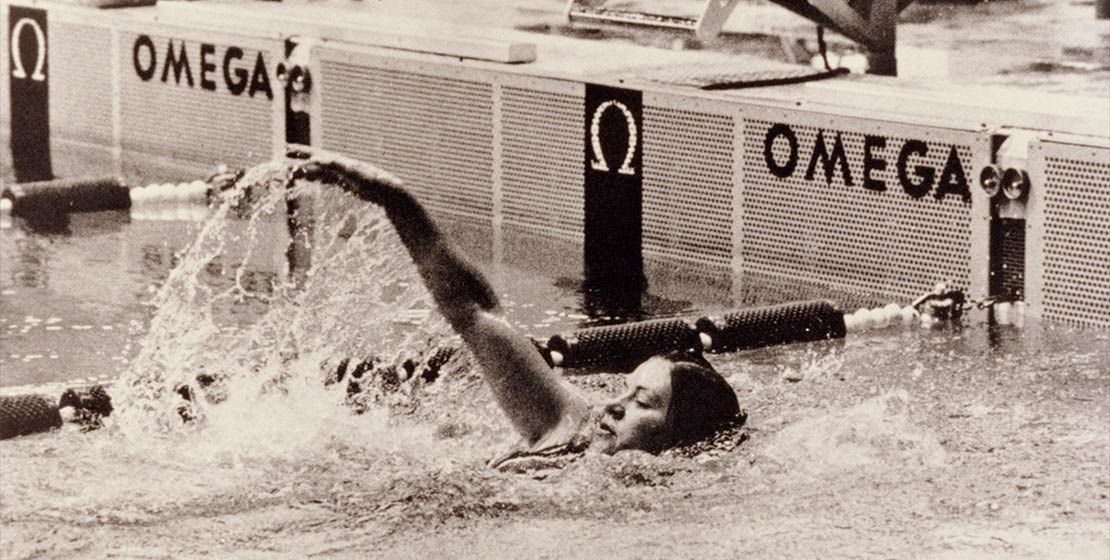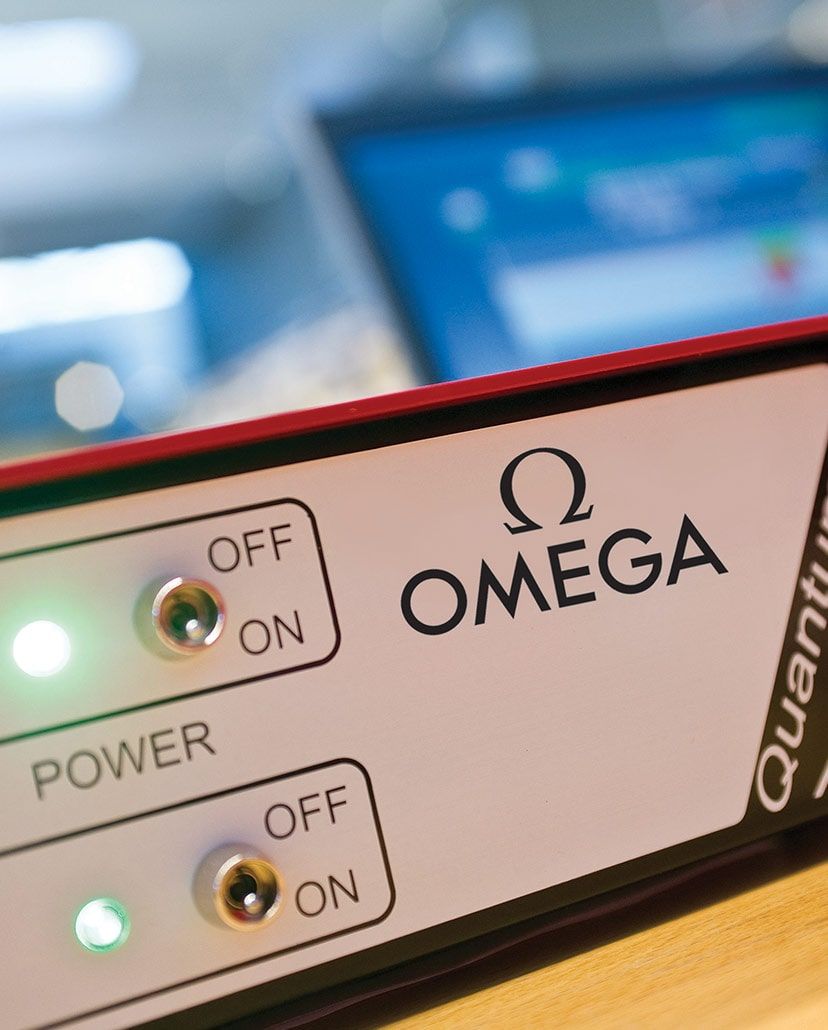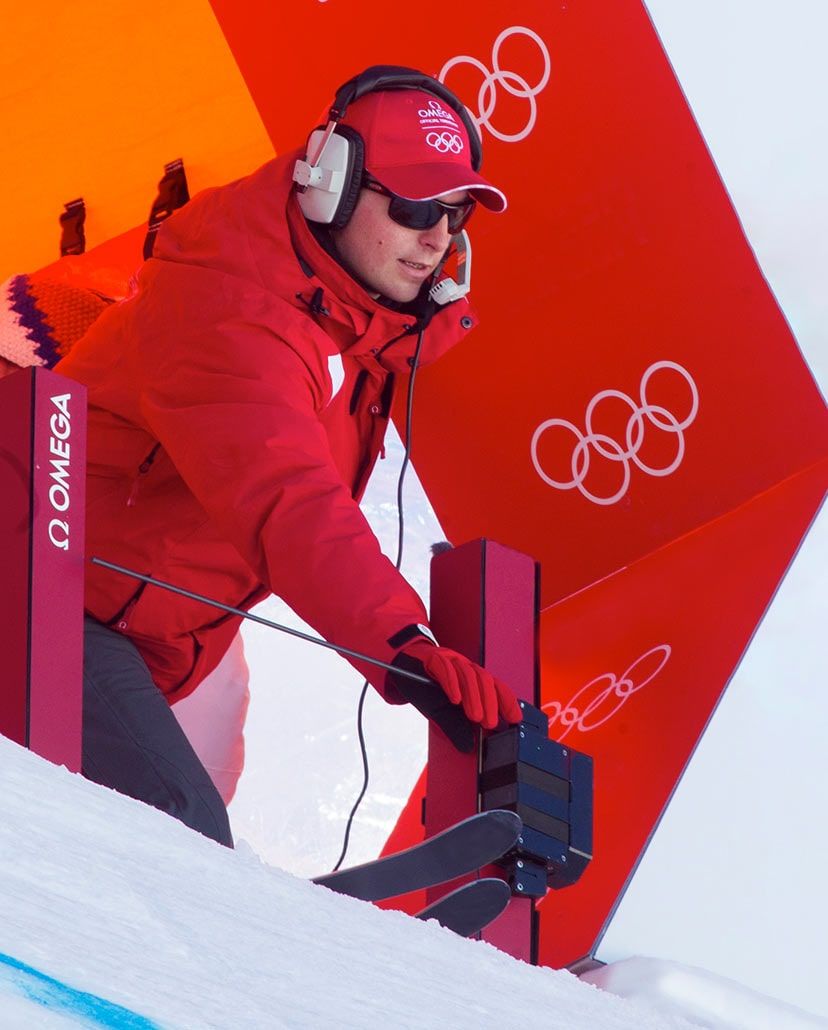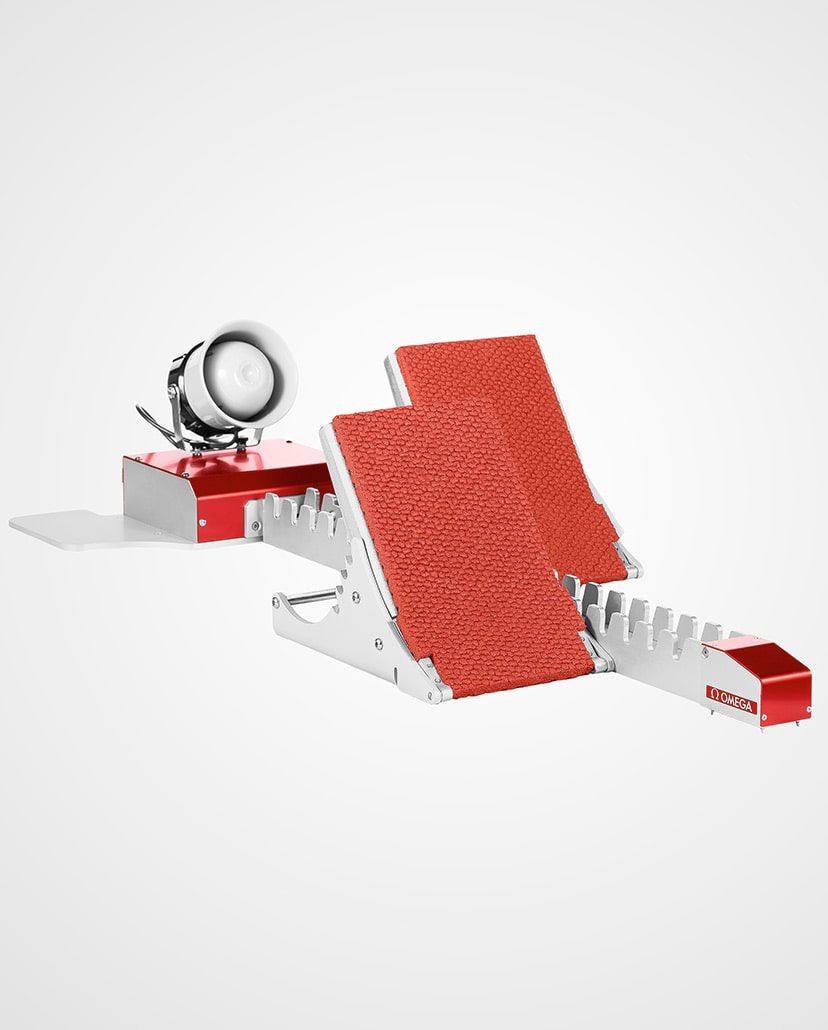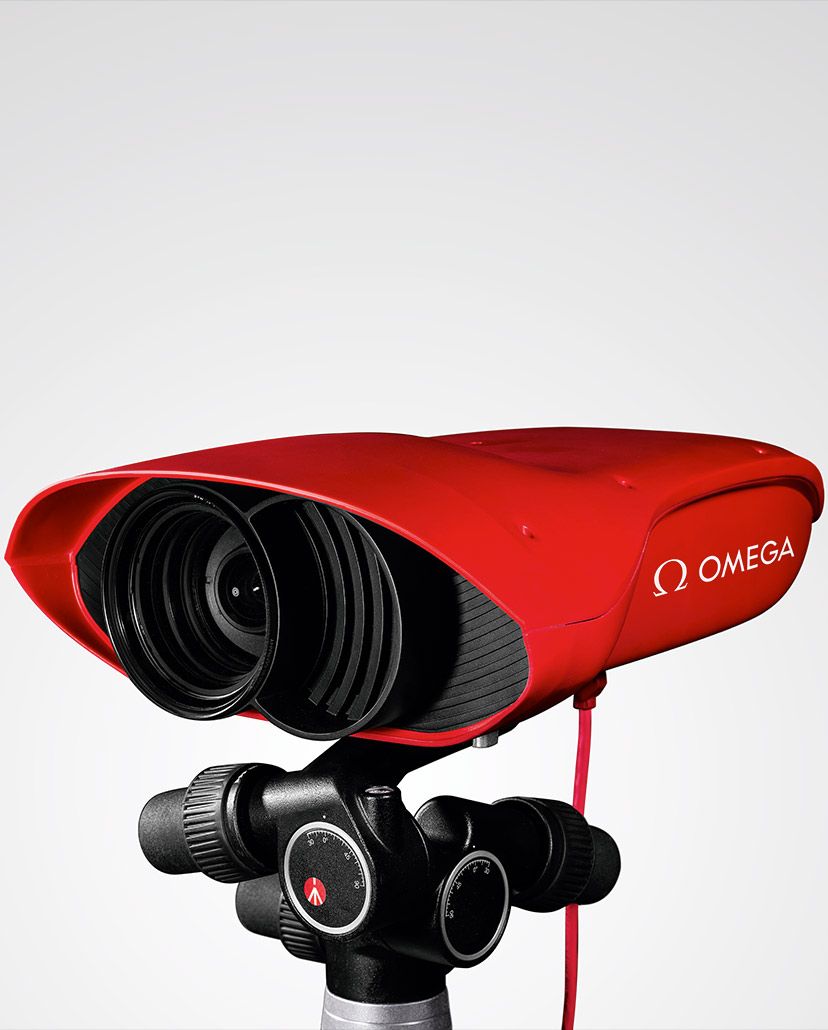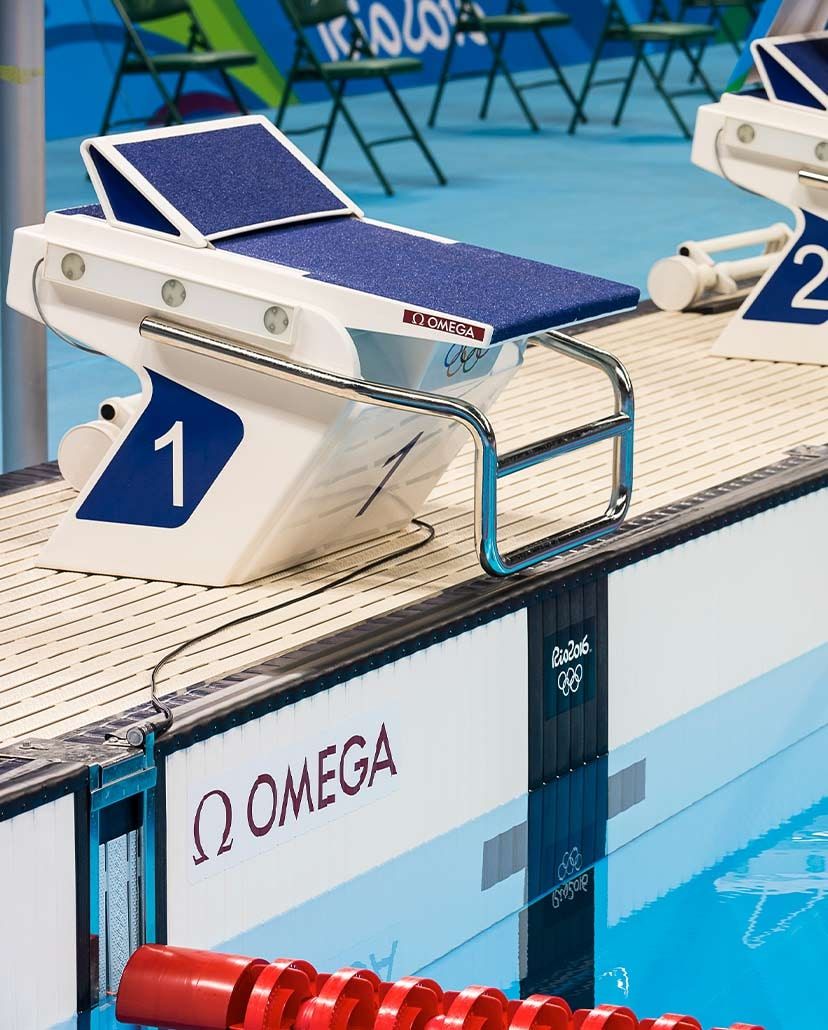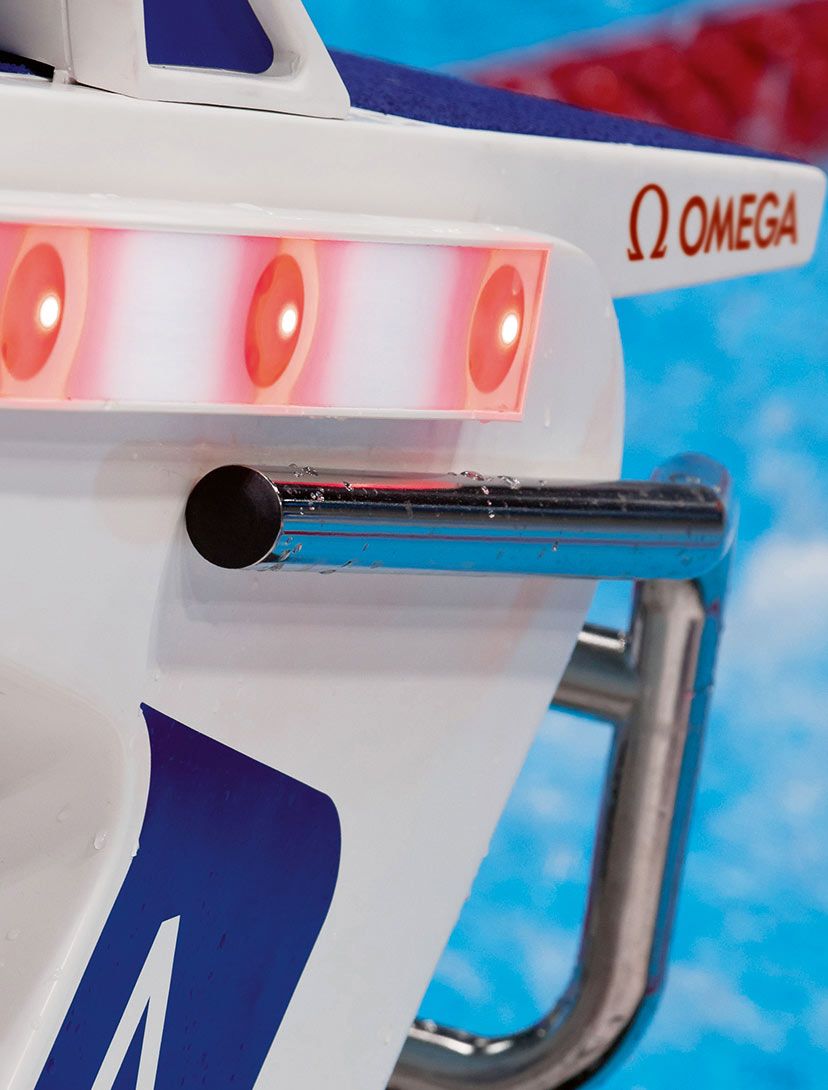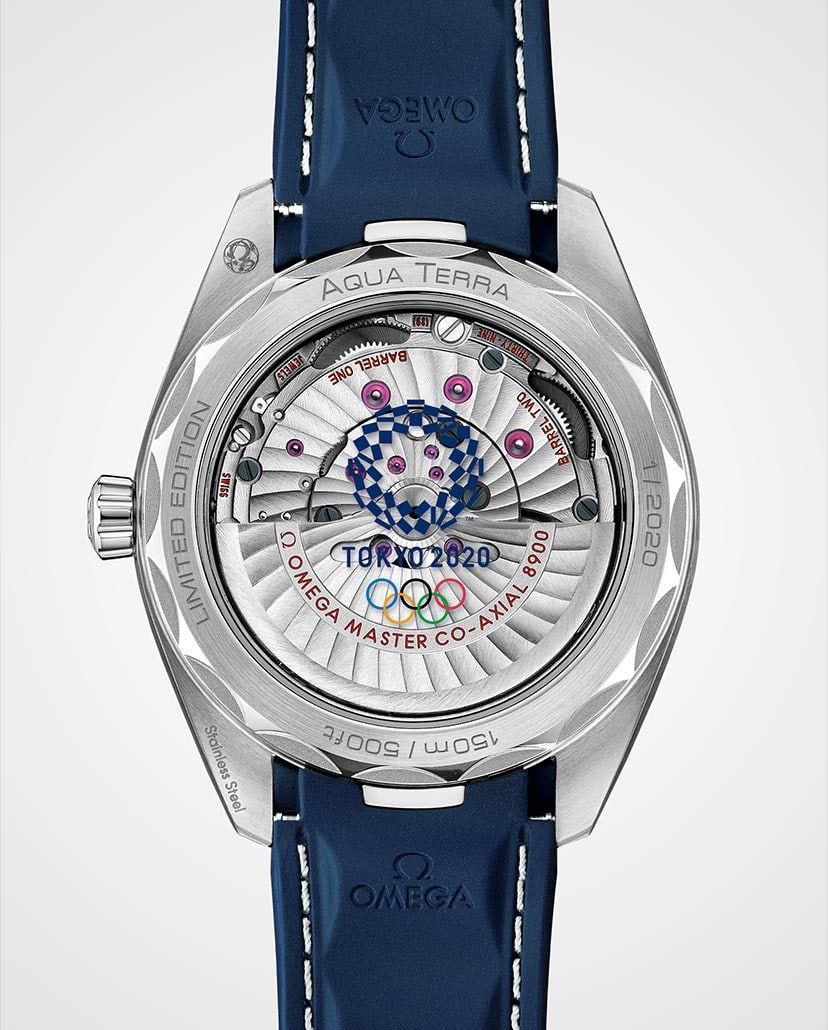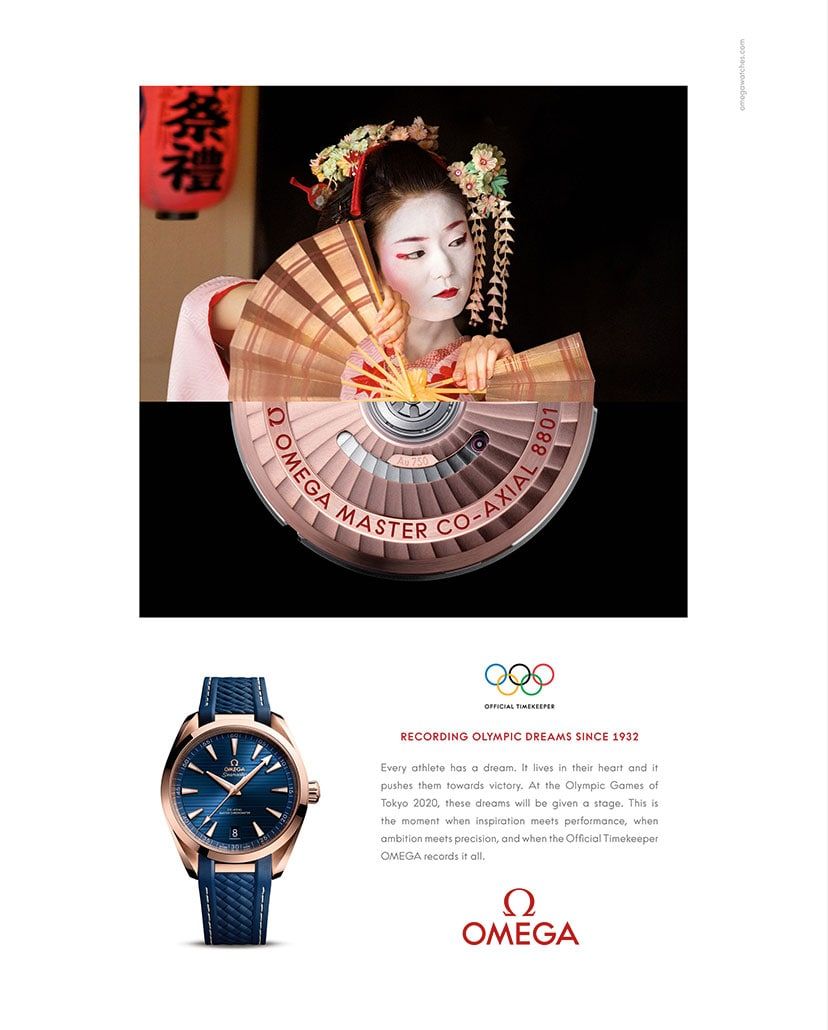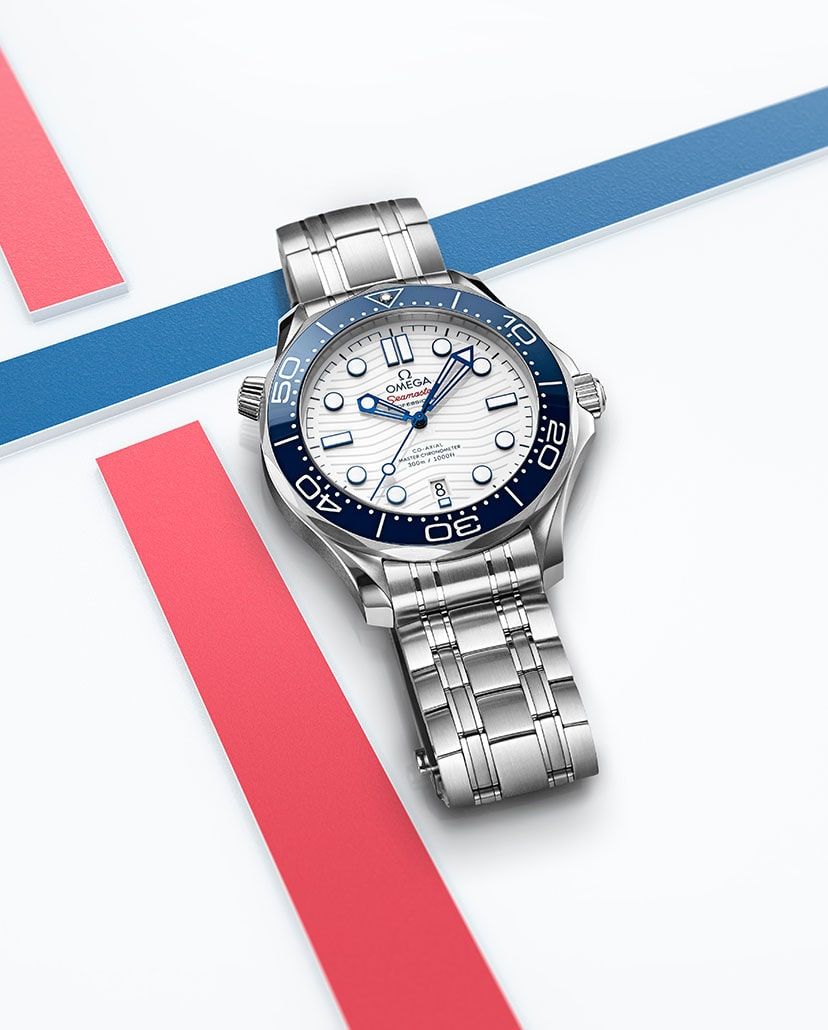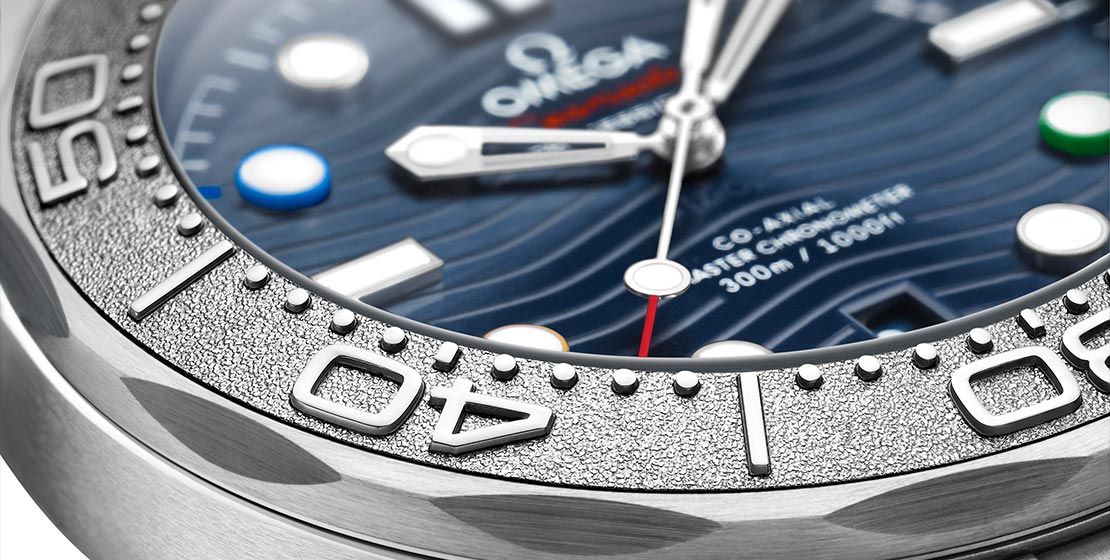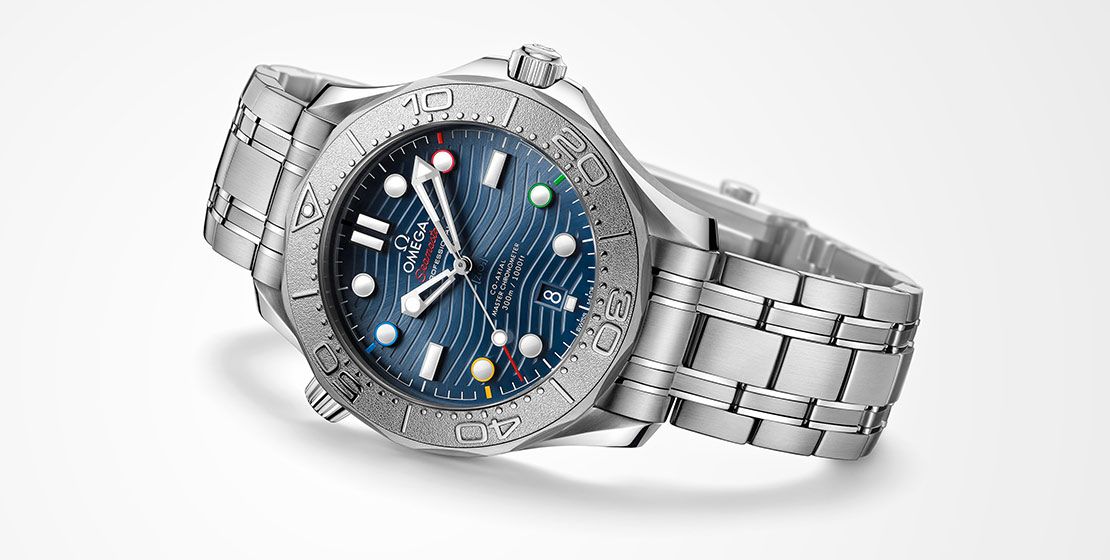FeatureOmega At The Olympics: Timing Tokyo 2020 And Beyond
With timing being everything in competitive sports, the official timekeeper’s role at the Olympics is as integral and definitive as it gets. Here’s a look at how Omega have excelled in this role 29 times, since 1932, and at all their major innovations leading up to timing Tokyo 2020, as well as the special Seamaster watches made for this edition of the Olympic Games
May We Recommend
The summer of 2020 was supposed to mark Omega’s 29th turn as the official timekeeper of the Olympic Games. Unfortunately, the global COVID-19 pandemic delayed the event with uncertainty, and the games could only begin this year. While the stadiums in Tokyo, Japan, are still without an audience, the games have continued, as the world has watched. With 339 events, across 33 sports, Swiss watchmakers Omega are recording every second of the games, including the new sports, such as karate, sport climbing, surfing, skateboarding, and baseball—making the number of competitions being timed by Omega higher than ever before. Every athlete participating has worked tirelessly and extra-patiently with the games having been delayed by a year. Omega’s job is extremely crucial, as getting the timing right to ensure that the gold is won by the objective best is everything. “Our duty is to provide the results to the athletes and we have to manage all the timing and scoring information and data,” states Alain Zobrist, CEO of Omega Timing.
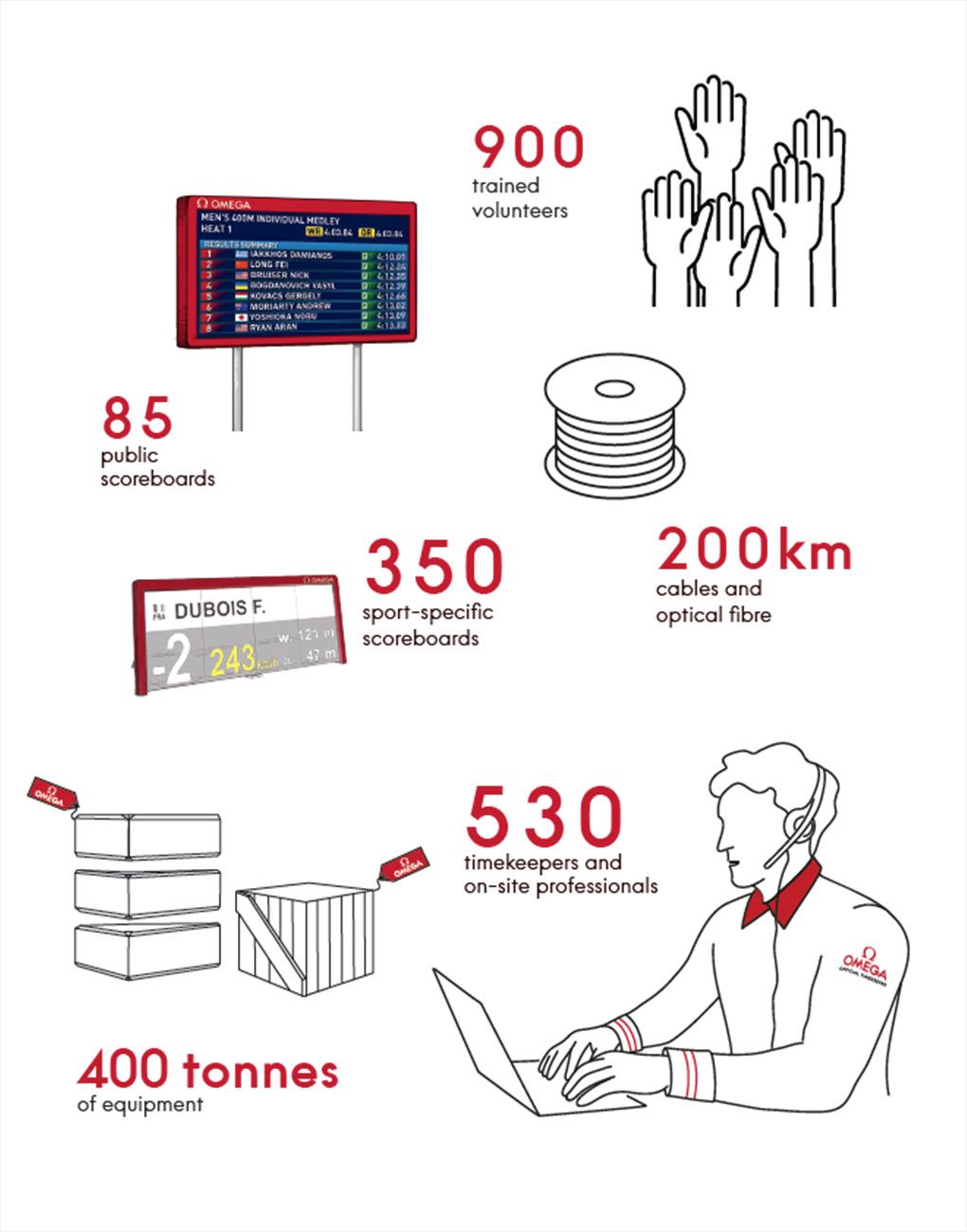
Since 1932, Omega have timed most of the Olympic Games—summer and winter editions. The most recent editions with Omega not being the official timekeepers were Atlanta 1996, Sydney 2000 and Athens 2004, when Swatch were the official timekeepers instead. The responsibility of timing the games was still with the Swatch Group, which Omega is a part of. After Athens 2004, Swatch Group decided that as their most traditional timekeeping brand worldwide, Omega would assume their role as the official timekeepers again.

Since then, it’s only been Omega, and, over the years, they’ve evolved and developed the most effective technologies in sport timekeeping. At Tokyo 2020, Omega’s know-how in the field has been elevated, with their most advanced timekeeping yet. At the ongoing games, they’ve got 400 tonnes of equipment, including scoreboards, cables and optical fibre, as well as 530 on-site timekeeping professionals and 900 trained volunteers.
Keeping Olympic Time—Omega’s Past At the Games
From manually-operated chronographs to far more advanced timekeeping devices, Omega’s timing of the Olympic Games has come a long way. The evolution of Omega’s Olympic timekeeping to what it is today has been defined by a number of milestones along the way, since their first time as timekeepers in 1932, in Los Angeles, USA.
Los Angeles 1932
It was for the first time that a single watch company was selected as the official timekeeper of the games. Omega sent one watchmaker from their headquarters in Bienne to Los Angeles, California, equipped with 30 high-precision stopwatches—all accurate up to 1/10th of a second.
Garmisch-Partenkirchen 1936
Timing the Winter Olympics fir the first time, Omega were presented with unique challenges, particularly with events such as alpine skiing. They had to literally send ‘starting times down the mountain in the pocket of the next skier’.
London 1948
This marked the start of the electronic era, when technology was becoming more effective than the human eye. Among Omega’s new technology was the first photo-finish camera, pinpointing exact finish positions in races. They also had a ‘photoelectric cell’ that stopped the clock electronically as soon as the first athlete crossed the finishing line.
Helsinki 1952
Omega was awarded the IOC Cross of Merit in 1952 for ‘exceptional services to the world of sport’. This edition also marked the use of Omega’s quartz-driven time recorder—an electronic chronograph that could also instantly print out results accurately up to 1/100th of a second.
Melbourne-Stockholm 1956
Omega introduced the Swim Eight-O-Matic—the first ever semi-automatic swim timer. While the pistol triggered the starting time, counters were stopped by hand-held timers at the finish line, which helped in distinguishing swimmers who finished at just about the same time—a major breakthrough in 1956.
Innsbruck 1964
Omegascope technology was introduced, changing the viewing experience forever. It brought about real-time reporting by displaying live times of athletes on the screen, effectively displaying Omega’s timekeeping instantly to millions, as it happened.
Mexico City 1968
Swimming touchpads gave swimmers control of ending their own time at the finish line. Sensitive to the slightest of touches, the pads, immersed in the water at the end line, stopped timer for each swimmer when they finished, ending any possible timing disputes over swim time.
Montreal 1976
Omega’s new video matrix board could show times, points and scores, as well as black-and-white video recordings. It paved the way for a lot ways in which results are displayed today.
Los Angeles 1984
The first false-start-detection device was introduced in track events. An extremely sensitive starting block measured the pressure exerted by the athlete. As runners launched forward, their reaction time was triggered by their force, allowing Omega to detect slightest false starts.
Seoul 1988
Computerised timekeeping was used for the first time. This allowed Omega to digitally store all the data gathered, in addition to measuring, allocating and printing out times. A new video matrix board also enabled the displaying of images and videos in colour.
Torino 2006
Back as the official timekeepers, Omega introduced the use of transponders worn by speed-skating athletes on their ankles. The chips in these devices could send and receive radio signals, through which Omega could capture specific time measurement throughout each race.
London 2012
Omega’s new Quantum Timer was used for the first time, with an enhanced resolution of one-millionth of a second.
PyeongChang 2018
This winter edition saw the use of new motion-sensor and positioning systems, which could help Omega provide continuous measurements of all the performances from start to finish. In addition to informing the results, this technology also provided athletes with analyses of their performance, and the audience with a better understanding of the events and the results.
Keeping Olympic Time—Omega’s Modern-Day Timekeeping
If you’ve been following the events at this year’s Olympics, you’re likely to have seen a few of these devices being used, as the modern-day timekeeping technology used by Omega to ensure that the results are as accurate and even as fair as they can be.
Electronic starting pistols
Since sound travels slower than light, traditional pistols didn’t allow for athletes to all hear the start at exactly the same time. Electronic pistols used today send out a sound heard by the athletes through a speaker placed behind each of them, while the pistol also sends a start pulse to the timing device.
Athletics starting blocks
The starting blocks used in athletics today have enhanced in-built sensors measuring the pressure exerted by an athlete’s foot 4,000 times per second, instantly sending measurements to an on-site computer, making any false starts apparent. Any reaction time below 100 milliseconds—1/10th of a second—is considered as premature, and hence a false start.
Scan O’Vision MYRIA
The most advanced photo-finish camera ever, this device is placed on the finish lines of sprints, hurdles, etc, and can record up to 10,000 digital images per second. This helps in creating composite photos to, in turn, help the judges to determine official rankings. These images prove how close races can be, and are now a famous sight at the games.
Photocell technology
Used since 1948 in London, this technology sends a beam of light across the finish line, instead of the tape or ribbon used traditionally, to instantly record the finish time as accurately as possible. While immediate finishing time is recorded in this manner, the official time is determined by the use of the photo-finish camera.
Swimming light show
Lights mounted on the starting blocks show the first, second and third positions by showing single, double and triple dots on the blocks of the respective swimmers, as soon as the race is over, instantly revealing the results.
Swimming touchpads
Used since 1968 in Mexico City, these touchpads make swimming the only sport wherein competitors can stop their own time, by exerting pressure as little as 1.5kg on the immersed devices at each end of the pool.
Quantum timer
Used since 2012 in London, Omega’s Quantum Timers feature a micro crystal component imbedded, which helps deliver a resolution of one-millionth of a second.
High-resolution scoreboards
Omega’s high-resolution scoreboards enhance the viewers’ experience by not only displaying the most relevant results-related information live, but various other visuals as well, such as images, animation and information related to the winners.
Tokyo 2020: Omega’s Debut Of Motion Sensing And Positioning Technology
With the ongoing edition of the Summer Olympics, Omega have introduced even more advancement in their timing of all the performances and events, with motion-sensing and positioning technology delivering very comprehensive, real-time data. This allows for a better understanding of how athletes achieve their final time and results—useful to the athletes and coaches for improving performance, but also to the analysts and commentators for better coverage, and to viewers for a more well-rounded experience of the games. Here’s a look at how it works across various sports.
Athletics
Athletes’ start numbers are being fitted with motion-sensor tags, which interact with receivers and send crucial information to Omega, allowing them to record live positions, speed, acceleration, deceleration and distance. This helps in knowing details such as where exactly every runner is positioned on the turn, whose acceleration made for the best start, when the winner reached their top speed, whose speed reduced, and even the distances between runners.
Swimming
With image-tracking cameras around the pool, movements of every swimmer are being tracked, for details such as live positions, live speed, as well as acceleration, deceleration, the distances between swimmers, and the number of strokes. With this, there’s a clearer sense of how the results come about.
Beach volleyball
Again, with Omega’s image-tracking cameras, the ball can be tracked, as can the players, delivering detailed data on every point scored. You can now know the distances between each player, their speed, and even details on their techniques and information on their jumps, height, as well as the type of shots. The kind of detailed data being gathered is indeed baffling.
Gymnastics
‘Pose detection’ being used in gymnastics registers every movement of the gymnasts—even providing judges with relevant data to review performance details such as synchronicity.
Equestrian
Equestrian events are being followed by Omega’s special image-tracking technology, while laser detection can pinpoint each horse’s movement. The difference between gold and silver can be determined by every second really, and data gathered on distances, speed, time of flight on a jump, each rider’s exact path, their trajectory, etc, definitely helps.
Sport climbing—timing the new event
Sport climbing is a new event at the Olympics this time. As the athletes compete in three disciplines, their rankings will be determined based on a combination of results. One is speed, which is recoded by the athletes themselves. They are supposed to hit the touchpads at the top of the 15m climbing wall. This is incidentally only the second event after swimming where the competitors have direct control over the recording of their time. The second discipline is bouldering, wherein athletes compete on 4.5m-high ‘boulders’ that present challenges to be overcome within a set time—controlled by Omega. And the final discipline is lead. Each athlete must cover as much of the 15m height of a climbing wall as they can, within six minutes, being timed by Omega.
Other sports
On road and track cycling, motion-sensor tags are being placed on bicycles, while tag bracelets are being worn by open-water swimmers and triathlon athletes, to pinpoint their positions.
The Tokyo 2020 Omega Special Editions

Seamaster Aqua Terra Tokyo 2020 Limited Edition
From the Seamaster collection of dive watches, the Aqua Terra series fits more into a lifestyle-sport space rather than being a professional dive watch. Yet, while it is an elegant sport watch for land, it’s just as good underwater—offering water resistance up to 150m. Even the name itself—Aqua Terra—literally translates to ‘ground-water’ in Latin. So it seems like a perfect choice for an Olympic watch, to represent athletes who perform really well on land, as well as those who excel in water. This special edition of the Aqua Terra features the collection’s first ceramic dial in blue, with a laser engraving of the Tokyo 2020 emblem pattern. The pattern is actually very apt as a textural element for a round dial, making quite a centrepiece, while also not being a very obvious reference to the Olympics, for a beholder who isn’t aware of the Tokyo 2020 symbol. On the sapphire crystal caseback, you’ll see a more direct rendition of the symbol, with the words ‘Tokyo 2020’ and the iconic Olympic rings. Completing the look of the watch is the textured rubber strap in blue to match the dial. Though it also comes with a steel bracelet in the presentation box, as an alternative. This is the steel edition, sized at 41mm, and limited to 2,020 pieces. The watch also comes in yellow gold with a leather strap—in 41mm and 38mm versions. All versions are Master Chronometers, powered by automatic movements offering the ultimate in accuracy and magnetic resistance.
Seamaster Planet Ocean Tokyo 2020 Limited Edition
A watch that is more of the professional variety—perhaps better representing the swimmers and other water-sport athletes—this is the Planet Ocean, which is water-resistant to 600m, or 2,000ft. At a very agreeable size of 39.5mm, it has a unisex appeal and looks like a breath of fresh air, with its all-white look. White was actually a thematic choice for this watch that is meant to be an ode to Japan, with the red dot on the lollipop-style central seconds hand representing the red dot on Japan’s national flag, which is also on red-on-white. The red accents become even more definitive of this Tokyo 2020 limited edition of 2,020 pieces, when you consider the ‘20’ in red on the 60-minute timer of the unidirectional-rotating diver’s bezel. This scale on the ceramic bezel insert is actually in Omega’s proprietary bulk metallic glass called Liquidmetal—mainly comprising zirconium, titanium, copper, nickel and beryllium—which can be formed into very thin structures.
Like the Aqua Terra, this one too has the Tokyo 2020 emblem and the Olympic rings on the sapphire crystal caseback. The steel case comes fitted with a white leather strap, complementing the dial, but in the presentation box, you also get two alternative straps—a steel bracelet and a pale grey NATO. This Master Chronometer watch runs on Omega’s automatic calibre 8800, which can store a power reserve of up to 55 hours.
Seamaster Diver 300M Tokyo 2020
With Seamaster being the key collection for this edition of the Olympics, there’s no way that Omega would leave out its bestselling series—the Diver 300M (which also happens to be the James Bond watch). A total crowd-pleaser, this dive watch is a favourite of many, more so after it was updated as a Master Chronometer in 2018. This one too is a Master Chronometer and runs on the Omega automatic calibre 8800, like the Planet Ocean above. This COSC-certified movement offers accuracy and anti-magnetism, as certified by the Swiss Federal Institute of Metrology (METAS) upon testing the movement when set within the watch, which is what makes it a Master Chronometer. The 42mm steel case, water-resistant to 300m, houses a white ceramic dial with a laser-engraved wave pattern—a signature element of the Seamaster Diver 300M series. Offset against the white of the dial are blue accents, such as the skeletonised hands and borders to the Super-LumiNova-filled indices. Complementing the blue is the ceramic insert of the unidirectional-rotating diver’s bezel, with the scale of the 60-minute timer in white enamel. A recurring element across all these special editions, the Tokyo 2020 emblem and the Olympic rings make an appearance on the sapphire crystal caseback of this watch as well. It comes with a Seamaster steel bracelet strap.
Omega at Beijing 2022, Paris 2024, Milan–Cortina d’Ampezzo 2026, Los Angeles 2028 and Brisbane 2032
With the Tokyo 2020 Summer Olympic Games coming to a end this week, Omega are preparing for the upcoming editions, especially the Beijing 2022 Winter Olympics, which are already upon us, since the current edition has taken place a year late. In fact, the brand already unveiled a Beijing 2022 special edition Seamaster Diver 300M, in February this year, to mark the start of the one-year countdown to the next edition. This Seamaster has accents of the Olympic ring colours on the hour markers—aptly in circles for at least four of the five colours—while the closed caseback is embossed with the Beijing 2022 emblem. The event next year will mark the 30th edition of the Olympics that Omega will be the official timekeepers for. With 109 events being planned, the winter games will take full advantage of the legacy and infrastructure of the Beijing 2008 venues.
However, it’s not just Beijing that we have to look forward to after Tokyo, as far as Omega’s concerned. Four years ago, the Swiss brand already renewed their global partnership with the International Olympic Committee, through to 2032. The year 2032 will also mark 100 years since the beginning of Omega’s association with the Olympics, so one can be sure that Brisbane 2032 will be a big one for them. Before that though, there will be three other editions, including the summer games of Paris 2024—with the Olympics returning to Europe—and then Los Angeles 2028, with Omega returning to the City of Angels, where their Olympics journey first began. Let the games continue!









